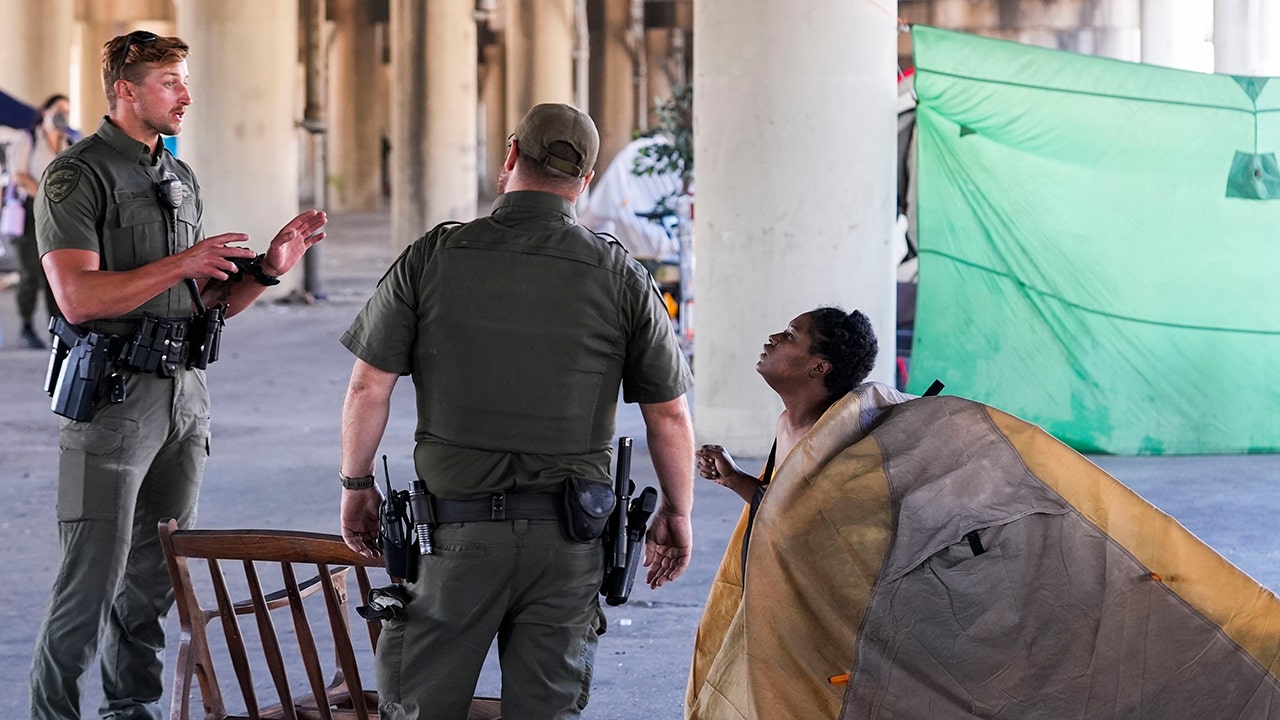The recent actions of Louisiana Governor Jeff Landry, involving the clearing of a homeless encampment in New Orleans just before Taylor Swift concerts, have sparked significant controversy and legal challenges. The governor’s administration justified the removal of approximately 75 individuals from a tent city near the Superdome as a measure to improve safety and presentation for the influx of visitors attending the highly anticipated events. However, this action has drawn criticism for its apparent disregard for the rights and well-being of the homeless population, prompting a lawsuit alleging violations of constitutional rights and prompting a temporary restraining order halting further such operations. This incident highlights the complex interplay between public image, event planning, and the rights of vulnerable populations, forcing a crucial conversation on appropriate responses to homelessness. The clash between the state’s desire to present a positive image and the rights of its most vulnerable citizens presents a compelling case study in ethical governance.
The Controversial Clearing of the Homeless Encampment
The Governor’s Justification
Governor Landry’s administration defended the clearing of the homeless encampment by citing safety concerns and the need to present a positive image of New Orleans to the large number of visitors expected for the Taylor Swift concerts and the upcoming Super Bowl. The statement released emphasized the importance of showcasing the city positively on the “world stage”. This rationale, while aiming to boost tourism, prioritizes a positive external image over the immediate needs and rights of the affected individuals. The decision essentially painted the homeless population as a detriment to the city’s presentation, overlooking their inherent humanity and their rights as citizens.
The Legal Challenge
The swift relocation of the encampment led to a lawsuit filed by some of the displaced individuals, alleging violations of their constitutional rights. They contend that state troopers illegally searched, seized, and destroyed their belongings without due process. Allegations include troopers forcefully removing individuals and discarding their possessions. One particularly concerning claim states troopers directly linked the removal to the Governor’s desire to clear the area for the concert. The lawsuit highlights the heavy-handed nature of the operation, questioning the legality and ethics of prioritizing a short-term aesthetic goal over the long-term well-being and fundamental rights of the city’s vulnerable population. This legal action aims to establish accountability for alleged actions by state authorities that disregard the basic human and legal rights of the homeless population.
The Judge’s Response and its Implications
The Temporary Restraining Order
In response to the lawsuit, Judge Lori Jupiter issued a temporary restraining order, preventing further evictions and property destruction by state law enforcement without proper judicial process. This order essentially halts the Governor’s initiative until at least November 4th, providing a crucial opportunity to examine the legality and morality of his actions. The judge’s decision highlights the inherent flaws within the strategy that prioritized cosmetic improvement over fundamental human rights. This temporary measure directly challenges the initial strategy, prompting re-evaluation of approaches towards homeless populations. The outcome of this temporary order directly impacts ongoing efforts in homelessness relief and sets a precedent for similar interventions.
Criticism from New Orleans Officials
Local officials in New Orleans sharply criticized the state’s actions, arguing that the swift relocation would negatively impact ongoing efforts to provide permanent housing solutions for homeless individuals. This criticism underscores the lack of coordination and the potential undermining of carefully-developed plans, thereby showcasing the disjointed governance and potential counterproductive measures. By creating sudden disruptions, the actions not only neglected the rights of individuals but also worked against the well-established, systematic, and locally supported community approaches focused on effective and sustained assistance for New Orleans’ homeless. The statement speaks volumes about a failure to fully consider consequences or collaborative effort across levels of government.
The Broader Context: Homelessness and Event Planning
The Ethics of Prioritizing Aesthetics over Human Rights
The controversy surrounding the New Orleans homeless encampment underscores a crucial ethical dilemma: the balance between public image, particularly for large-scale events, and the fundamental rights and well-being of vulnerable populations. The city’s desire to present a clean and attractive face to a large number of visitors raises concerns about prioritization—whether an efficient approach is prioritized over upholding the rights and responsibilities of the city’s most at-risk residents. The focus on a visually appealing city to external visitors contrasts strongly with its treatment of marginalized communities and presents a stark conflict between appearances and humanitarian efforts. The case directly exposes the challenge of creating sustainable community support amidst economic and social needs for individuals living in precarious situations.
Long-Term Solutions vs. Short-Term Fixes
This incident highlights the often-fraught relationship between short-term fixes to perceived problems and long-term, sustainable solutions for homelessness. Simply moving individuals does not address the underlying causes or offer practical long-term plans to help people off the streets, while generating mistrust and negatively impacting any initiatives that aim for progressive and efficient humanitarian outreach programs. The Governor’s choice is a stark example of how seemingly immediate and efficient solutions only create wider community difficulties. It’s vital to develop more comprehensive, lasting approaches to addressing homelessness that go beyond mere aesthetic concerns. Addressing systemic problems necessitates focused efforts that integrate diverse stakeholders in crafting long-term solutions rather than short-term actions based purely on a superficial perception of public image and potential disruption.
Take Away Points
- The Governor’s actions sparked a critical conversation about the ethical treatment of homeless individuals and prioritization of events over human rights.
- The legal challenge and the judge’s temporary restraining order demonstrate the legal vulnerabilities of such actions, as it directly opposes humanitarian responsibility.
- The controversy highlights the tension between short-term aesthetic goals and long-term solutions for complex issues such as homelessness.
- The criticism from New Orleans officials illustrates the lack of coordination between state and local governments in dealing with crucial societal problems and highlights disunity in efforts.
- The incident necessitates a discussion about the ethical implications of event planning and its impact on marginalized communities within any context.




